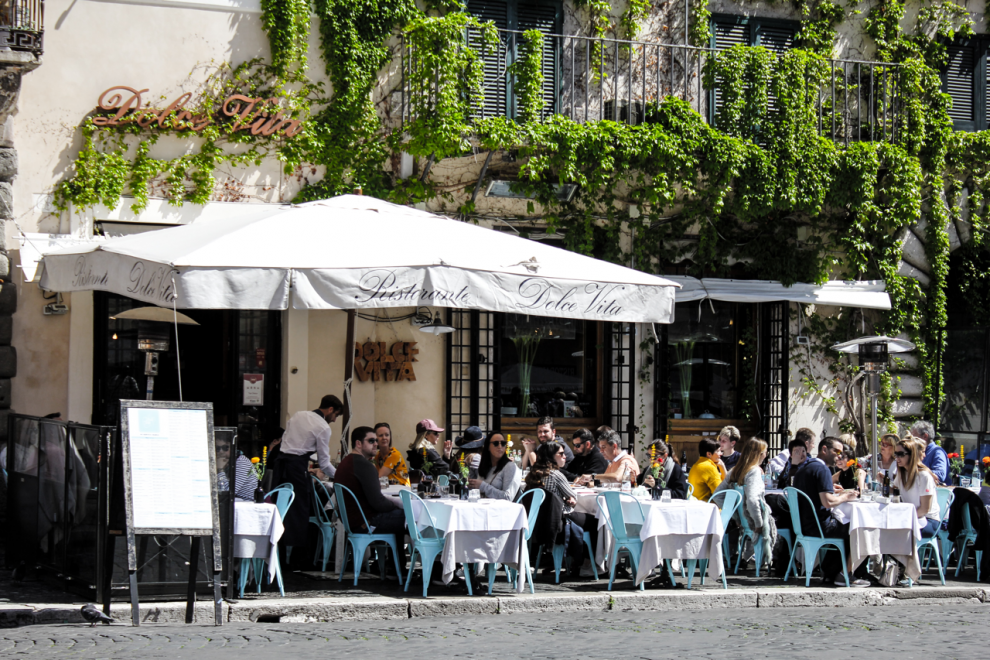Italy’s aperitivo, a centuries-old tradition beloved by all, is not simply a happy hour or after-work drinks. It is an important social ritual recognizing the importance of community connections. Occurring before dinner, aperitivo is a time for friends and colleagues to gather, unwind, and share cocktails and small bites. It is more than just a drink. It is a way of life and a cultural institution that reflects the Italian love of great food, good company, and fun times.
View this post on Instagram
The history of aperitivo in Italy dates back to the eighteenth century. First popular in Northern Italy, Italian cafes began promoting pre-dinner social gatherings offering small snacks and drinks. In the twentieth century, particularly post World War II, this custom became more fashionable and spread to other parts of the country. During this time of economic growth and social change, Italy’s emerging middle class adopted a more cosmopolitan lifestyle. “La Dolce Vita” was embraced, and the “Art of Aperitivo” was born. Bartenders began experimenting with new, unique ingredients, flavors, and combinations, creating many of the aperitivi that are still popular today. Aperitivo is a ubiquitous part of Italian life, which you can find evidence of in nearly every Italian piazza between 6:00 and 9:00 pm.
Beyond the meaningful social rationale for this tradition, there are physical benefits as well. Drinking an aperitivo is proven to stimulate the appetite, prepare the palate, and aid in the digestion of the meal to come. Typical flavor profiles of an aperitivo are bitter, botanical, or both, and popular aperitivi include Aperol, Campari, vermouth, and gin. Often mixed with club soda, tonic water, or prosecco, an aperitivo is a refreshingly light and low-proof cocktail. While wine, particularly dry or fortified, is acceptable, classic Italian cocktails are favored. Enjoy the famous spritz, a perfectly balanced combination of Aperol, Campari, or Cynar with prosecco and club soda. Want something with a little more depth? The Negroni is perfect, made with Campari, gin, and sweet vermouth, or swap the gin for prosecco and order a Negroni Sbagliato or “Broken Negroni.” Other popular aperitivo choices include the Martini or the Americano.
View this post on Instagram
A traditional Italian aperitivo is not complete without snacks or small bites. Not meant to replace dinner, these snacks are light and flavorful and may range from chips or nuts to cured meats and cheeses. When traveling throughout Italy, you will discover aperitivo may differ slightly depending on the region. In Venice, you will encounter the term “ombra,” meaning a small glass of wine, and “cicchetti,” little snacks such as polpette, crostini, or pickled seafood and vegetables offered in “bacari” or small bars and restaurants. While cicchetti is served all day and not exclusive to aperitivo, this staunchly Venetian snack is a perfect pairing to an evening cocktail. In Rome, aperitivo often features “sfizi,” a selection of hot and cold delights, and across Italy, a common term for these delicious tastes is “stuzzichini.” Traditional stuzzichini includes anything from olives, nuts, cheese, cured meats, bruschetta, and crostini. Whichever the name, this fare is simple, tasty, and the perfect accompaniment to a refreshing cocktail with friends.
View this post on Instagram
Participating in these convivial gatherings and enjoying simple pleasures is a fantastic way to immerse yourself in the local culture. Whether sipping a Negroni Sbagliato in a bustling cafe in Milan or enjoying an Aperol Spritz on a sunny rooftop terrace in Rome, aperitivo is a cherished part of Italian life that will leave you feeling satisfied and connected to the people around you.
View this post on Instagram
Alexis Doerfler
The Destination Designer – Custom Travel Planning
To learn more about custom travel planning, inquire at www.thedestinationdesigner.com
www.instagram.com/thedestinationdesigner







